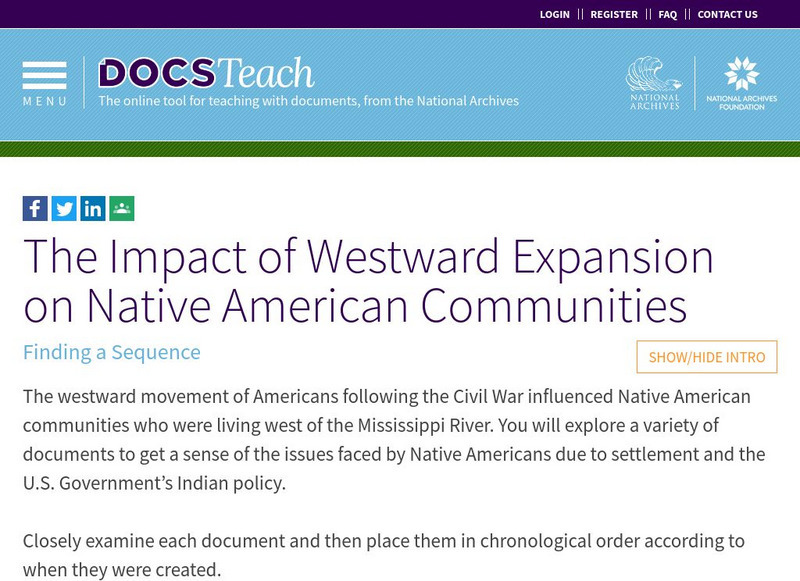Curated OER
Push and Pull Factors on Migration
Students investigate push and pull factors. In this population trends lesson, students examine primary sources that help them comprehend how push and pull factors have changed over time.
Curated OER
Federalist and Antifederalist Papers
Learners debate the Federalist and Anti-federal Papers after using the Internet as a research tool.
Curated OER
Part-Part-Whole
In this math worksheet, students color pictures to show that a whole number is a combination of two smaller parts. Students listen as their buddy demonstrates telling about the pictures, example: "I see one blue balloon and three red...
Curated OER
Hawaii's Future Tied to History
Students investigate Hawaii's history to help them explain how a Reorganization Act may affect its residents. students track the region's history from statehood, to kingdom, to human settlement.
Curated OER
Boarding School vs. Day School Experiences
Students compare and contrast the lives of Hopi children that attend boarding school and those that attend day school. In this schools lesson plan, students understand changes over time as they look at these schools chronologically.
Curated OER
Mother Earth
Students compare natural and human made items and gain an awareness of the importance of Mother Earth to the Nez Perce people.
Curated OER
Jefferson Administration
Students research the major domestic issues that were present during the administration of Thomas Jefferson including the acquisition of the Louisiana Territory, Lewis and Clark's expedition, and his foreign policy. They investigate...
Curated OER
The Kansas Flag
First graders study the symbols on the Kansas flag. In this social studies lesson, 1st graders read about the symbols on the state flag. Students create a flag folder and complete word work assignment for each of the symbols discussed.
Curated OER
Protecting Land
Students complete the Protecting Land anticipation guide. They use Internet to research land ownership in Alaska.
Curated OER
What Was It Like?
Learners use the Internet to gather historical facts about the county in which they live. Using the information, they discover how to check it for accuracy and present their findings to the class. They write an essay about the history of...
Curated OER
We're Finally on our Own: May 4, 1970
Learners examine photos of the Kent State University unrest of the 1970's and discuss what the photos represent. They complete a written assessment.
Curated OER
Wartime and the Bill of Rights: The Korematsu Case (Lesson 2)
Twelfth graders review how the government and Bill of Rights came into effect. Using primary source documents, they discuss if Japanese rights were violated when they were placed in internment camps after the bombing of Pearl Harbor. ...
Curated OER
All Men Are Created Equal
Young scholars discuss the statement "All Men Are Created Equal". Using the internet, they research events in history in which this statement has been ignored and supported by the government. They use this information to write an essay...
Curated OER
Understanding Treaties: Students Explore the Lives of Yakama People Before and After Treaties
Students examine the impact of treaties on the Yakama nation. They discover the importance of land and how they felt when their land was taken away. They role-play the positions of both the Yakama and citizens of the United States.
Curated OER
Whose Rock Is This Anyway?
Students will seek to understand the events at Pipestone Quarry and what may have caused them. Pipestone Quarry in Pipestone, Minnesota, bears the mythic red Sioux quartzite called Pipestone or Catlinite.
Curated OER
Our Goal Pole
Studnets discuss the meaning of exploration and investigate a map of the Louisiana Territory. They discuss Lewis and Clark's expedition and complete worksheets. They create a "goal pole" that represents their learning.
Curated OER
California Mission Slide Show
Fourth graders research the details of a California Mission. They design a slide show to present their research.
Curated OER
Whose Business?
Fourth graders compare and contrast the businesses in Fort Griffin with those in their own community. Using the internet, they discover the factors that have influenced the development of businesses in a town. They also create a map of...
Library of Congress
Loc: The Learning Page: American Indian Reservation Controversies
Primary sources help students understand issues and controversies surrounding the American Indian Reservations of the 1870s. Historians provide different accounts and views of this facet of American history, and students utilize these...
US National Archives
Docsteach: The Impact of Westward Expansion on Native American Groups
In this activity, students will examine the impact of westward expansion and settlement on Native American groups following the Civil War. Students will explore a variety of documents to get a sense of the issues faced by Native...
PBS
Pbs: Indian Country Diaries, Tribal Sovereignty Lesson Plan
This lesson plan will ask students to review sections of A Seat at the Drum and Spiral of Fire where the many issues of tribal sovereignty are evident. Students will be asked to research the sovereignty issues facing a tribe that resides...
US Mint
U.s. Mint: We're Going on a Bison Hunt [Pdf]
In this four-part lesson, examine the significance of the Louisiana Purchase and Lewis and Clark's Expedition. Then take the students on a simulated bison hunt to understand the importance of the bison as a food and materials source in...
Library of Virginia
Virginia Memory: Blank Space: Mapping the Unknown
How did early maps show the mapmakers' perception of the known world? Early mapmakers used maps drawn from coastal explorations, land travels, and even information heard word of mouth from American Indians or from colonists or traders....
iCivics
I Civics: Tribal Government
As sovereign nations, American Indian and Alaska Native tribes develop and manage their own governments. This lesson examines the varied structures and functions of tribal government as well as the relationship these nations have with...





















![U.s. Mint: We're Going on a Bison Hunt [Pdf] Lesson Plan U.s. Mint: We're Going on a Bison Hunt [Pdf] Lesson Plan](https://content.lessonplanet.com/knovation/original/249025-9f5e44d8a919bd8ec2d9ad8c543a3d75.jpg?1661243093)

